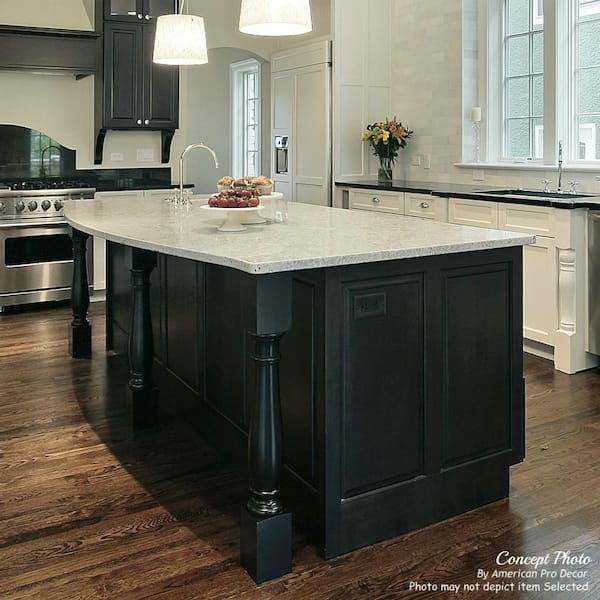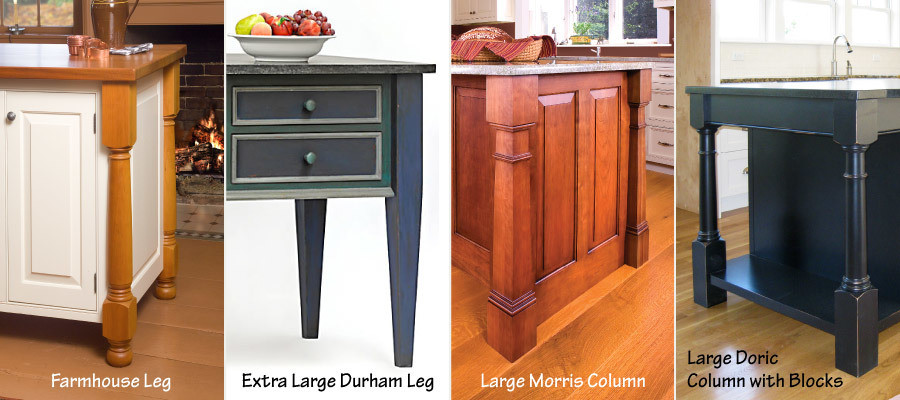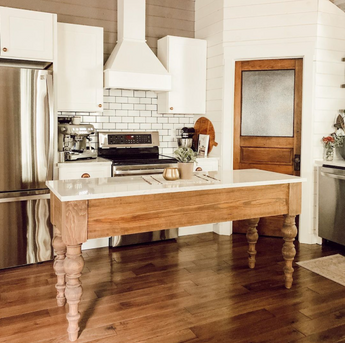Kitchen Island Legs for Modern and Standard Kitchens
Kitchen Island Legs for Modern and Standard Kitchens
Blog Article
Crucial Tips for Choosing the Perfect Dining Table for Your Cooking Area
Selecting the perfect table for your kitchen is even more than just a matter of preference; it demands a complete understanding of your room and demands. Begin by gauging your available space to guarantee adequate clearance for motion. The shape of the table plays a crucial duty; while rectangular tables fit larger locations, round ones foster affection, and extendable options use flexibility. Product choice is just as vital, with hardwoods offering longevity and glass loaning a modern touch. The table ought to balance with your kitchen area's appearances and fit your family members easily. What other elements might influence this vital decision?
Procedure Your Area
Picking the suitable eating table starts with a careful assessment of your readily available room. This foundational action makes sure that the table not only fits pleasantly within the area yet likewise enhances the general layout and capability of your eating location.
It is vital to leave adequate space for chairs to be drawn out and for people to relocate around the table without obstruction. A general rule of thumb is to enable at least 36 inches of clearance from the side of the table to the local wall or item of furniture.
Additionally, believe concerning the number of people you generally delight and whether you need added room for visitors. Deciding for an extendable table can supply versatility, permitting you to accommodate differing numbers of diners. By accurately gauging your room, you prepared for picking a dining table that enhances both the aesthetics and functionality of your dining location.
Select the Right Shape

On the various other hand, round tables are outstanding for smaller sized kitchen areas or intimate events, as they promote conversation by allowing every person to face each other. They additionally provide a feeling of coziness and can fit well in tighter areas as a result of their lack of sharp edges. Oval tables supply the very best of both globes, integrating the length of rectangle-shaped tables with the affection of round ones, making them functional for different setups.
Square tables are an additional choice, especially suited for square-shaped spaces. They create a in proportion and modern-day look, promoting an equal eating experience for all seated. However, they might be less sensible for bigger gatherings unless they come with extensions. Inevitably, the shape you choose ought to straighten with your room dimensions and lifestyle to ensure both form and feature.
Material Factors To Consider
When choosing a dining table, material factors to consider are extremely important in establishing the table's resilience, upkeep requirements, and overall visual. Wood is a traditional choice, providing timeless charm and effectiveness.
Glass-topped tables offer a contemporary, streamlined look and can make a room show up larger due to their openness. Nevertheless, they require constant cleaning to avoid fingerprints and spots. Additionally, tempered glass is suggested for its additional strength and safety.

Lastly, composite products like MDF (Medium-Density Fiberboard) or plywood are affordable choices. These materials can i was reading this simulate the appearance of strong timber yet might not offer the exact same durability. They are normally easier to tidy however can be at risk to water damage if not properly sealed.
Eventually, the selection of material must align with your kitchen's design, your way of life requires, and your budget restraints. (kitchen island legs)
Seating Capacity and Convenience
Exactly how do you establish the right seats ability and convenience for your table? This important step involves examining both the physical area available in your kitchen and your family's functional requirements. Begin by measuring your kitchen location to ensure the table fits pleasantly, allowing at the very least 36 inches of clearance around it for simple activity. Consider the variety of individuals who usually dine with each other, as this will certainly influence the table dimension. For a family members of 4, a rectangular table of 48 inches long or a round table with a 48-inch diameter is typically enough.
The height of the table should ideally be around 30 inches, supplying a well balanced ergonomic stance for seated restaurants. Chairs need to have a seat elevation of 18 to 20 inches to make sure a comfy eating posture.
Design and Aesthetic Appeal
Picking a table that fits your style and aesthetics entails balancing personal preference with the existing style of your eating space. The table is commonly the centerpiece of the cooking area, and its layout should match the general theme of the area. Whether your kitchen boasts a contemporary, minimal appearance or a rustic, farmhouse charm, the table you pick need to balance with these components to create a cohesive and inviting environment.
Take into consideration materials very carefully; timber provides an ageless charm and can range from abundant mahogany for a traditional look to lighter oak for a modern feel. Metal and glass tables, on the various other hand, can present a smooth, commercial edge to your kitchen area. Do not ignore the table's form-- rectangular tables are flexible and timeless, while round and oblong alternatives can promote an extra intimate dining experience.
Furthermore, pay close attention to details have a peek at this site and coatings. A distressed finish may include personality and heat, whereas a glossy surface can add to a tidy, contemporary aesthetic. Ultimately, your dining table should not only fit flawlessly right into your cooking area's design yet also show your individual style, raising the room both functionally and aesthetically.
Final Thought
In final thought, picking the perfect dining table for a kitchen area demands careful evaluation of area, shape, material, seating ability, and aesthetic harmony. Ultimately, a well-chosen eating table cultivates a welcoming atmosphere and suits the home comfortably, hence improving the eating experience.

When picking a dining table, material considerations are critical in identifying the table's sturdiness, upkeep demands, and overall aesthetic. For a household of 4, a rectangular table of 48 inches long or a round table with a 48-inch size is generally adequate.
Don't ignore the table's hop over to here form-- rectangle-shaped tables are timeless and flexible, while round and oval alternatives can cultivate an extra intimate dining experience. kitchen island legs.
Report this page